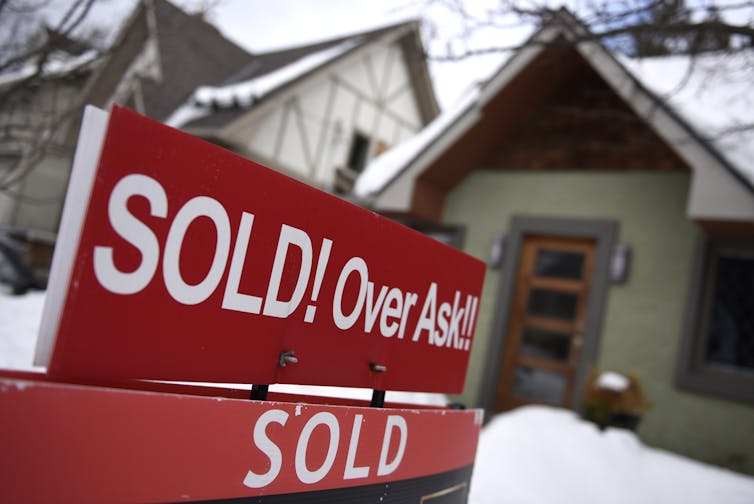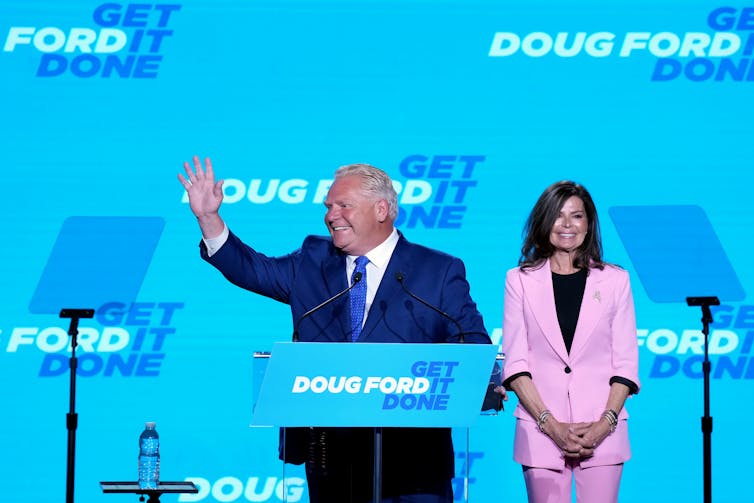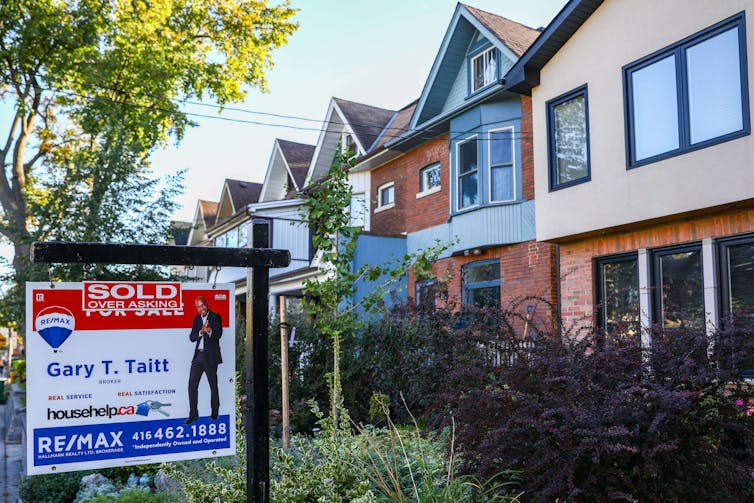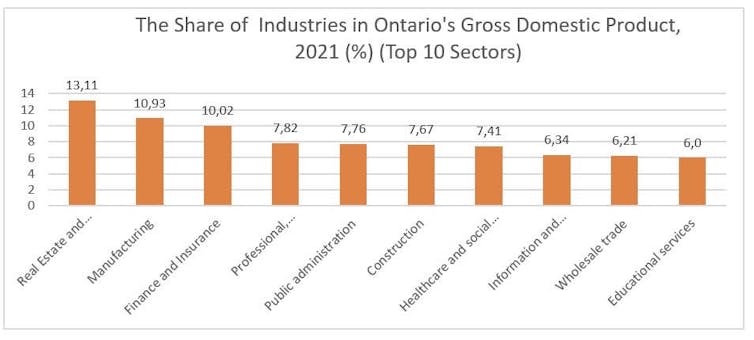


THE CANADIAN PRESS/Justin Tang
Murat Ucoglu, York University, Canada and Ute Lehrer, York University, Canada
During his provincial election victory speech on June 2, Ontario Premier Doug Ford said he aimed to build more housing to make the housing market more “attainable” for everyone.
Although most people probably didn’t pay close attention to the specific choice of words Ford used during his speech, it’s alarming that Ford abandoned the word “affordable” in lieu of “attainable.”
Instead of applying a word that speaks to the economic side of the housing crisis, his script writer opted for a term that means achievable, realistic, manageable.
This is troubling because it indicates that Ford is actively shifting the discourse away from an already very loose concept of affordability to a terrain that is even less defined.

THE CANADIAN PRESS/Nathan Denette
In February, Ford presented the Housing Affordability Task Force report, recognizing the existence of the housing crisis and the need for urgent affordable housing.
However, despite acknowledging the need for more affordable rentals, the report failed to explain how exactly the province would achieve this. This is somewhat ironic, given the title of the task force.
In addition, the report does not address some of the problems pertaining to housing such as evictions, rent control and homelessness.
Deepening housing crisis
Statistics Canada defines housing affordability as no more than 30 per cent of household income being spent on housing-related expenses.
However, in the Greater Toronto Area and in Ontario broadly, there is a huge disparity between the rise of housing prices and household incomes.
The real estate market has witnessed a tremendous increase. Since 2010, it has almost tripled, both within the Greater Toronto Area (to $1,254,436 from $431,262 in April 2022), as well as within Ontario (to $923,000 from $329,000 in 2021).

THE CANADIAN PRESS/Evan Buhler
At the same time, the average household income has increased only by about a third. This disparity between increased housing prices and stagnant household income is the key reason for the housing crisis in Ontario, particularly in the Greater Toronto Area.
Housing financialization
Ford may have avoided the term affordable because the economic growth model in Canada depends on the conversion of housing from a human right into a financial investment tool — a process known as housing financialization.
Since the early 2000s, Ontario has embraced this economic growth model that prioritizes property speculation and real estate-driven economic growth.
Housing financialization has resulted in the creation of new housing projects for investment purposes, rather than affordability and accessibility. This economic growth model is the principle reason for the housing crisis in Ontario.

(Statistics Canada), Author provided
Ford is an advocate of pro-development growth and acts as an anti-environmentalist by advocating for more urban sprawl in the form of more suburban housing.
The massive suburbanization process in the Greater Toronto Area will be accelerated through further housing financialization. Unless we force politicians to change the current economic model through policies, the housing crisis will continue to deepen.
The need for a strong housing agenda
Increasing the housing supply — the most commonly proposed scenario by all major parties to deal with the crisis, with the exception of the Green Party — will not solve the issue unless affordable housing supply is specifically increased.
While the general housing supply continues to grow, supported through policies from all three levels of government, there are no explicit policies in place for affordable housing.
As a consequence, housing prices continue to increase, or at least remain unaffordable, because adding supply does not automatically translate into a decline of housing prices.
Affordability can only be achieved with an ambitious plan that invests in affordable rental housing, similar to what was done between 1960-79 in Toronto, when 66 per cent of all new housing was built as purpose-built rental units. Since then, there has been little investment in this housing option.
Even though there are some projects from different levels of government, this is the only way to reduce the long list of 79,572 people waiting for affordable housing in Toronto.
That is why all three levels of government need to be called into action, come together and develop an ambitious plan for affordable housing. We must resist Ford’s new term of “attainable” housing and with it, prevent him from abandoning the quest for truly affordable housing.
Seyfi Tomar, Secretary General of the International Real Estate Federation Canadian branch, co-authored this article.![]()
Murat Ucoglu, Postdoctoral Researcher in Urban Studies, York University, Canada and Ute Lehrer, Professor of Urban Planning, York University, Canada
This article is republished from The Conversation under a Creative Commons license. Read the original article.